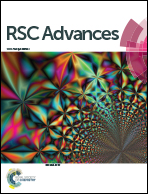Fast conversion of lithium (poly)sulfides in lithium–sulfur batteries using three-dimensional porous carbon†
Abstract
The slow redox kinetics of polysulfide hinders the rapid and complete conversion between soluble polysulfides and Li2S2/Li2S, resulting in unsatisfactory rate and cycle performance in lithium-sulfur batteries. Electrochemical catalysis, one effective method, promotes the reaction kinetics and inhibits the “shuttle effect”. Here, we present a three-dimensional ordered macro-porous carbon with abundant cobalt–nitrogen–carbon active sites as a matrix catalyst, leading to accelerated polysulfide redox kinetics. In addition, the interconnected conductive frameworks with ordered macro-porous carbon afford fast ion/electron transport and provide sufficient space to adapt to the volume expansion of the sulfur electrode. Owing to the aforementioned advantages, a lithium–sulfur battery with the matrix catalyst delivers a high specific capacity (1140 mA h g−1 at 0.1C) and a low capacity decay rate (0.0937% per cycle over 500 cycles). Moreover, there is a high rate capacity (349.1 mA h g−1) even at the high current density of 2C and sulfur loading of 3.8 mg cm−2 due to the improved polysulfide redox kinetics by a catalytic effect.



 Please wait while we load your content...
Please wait while we load your content...